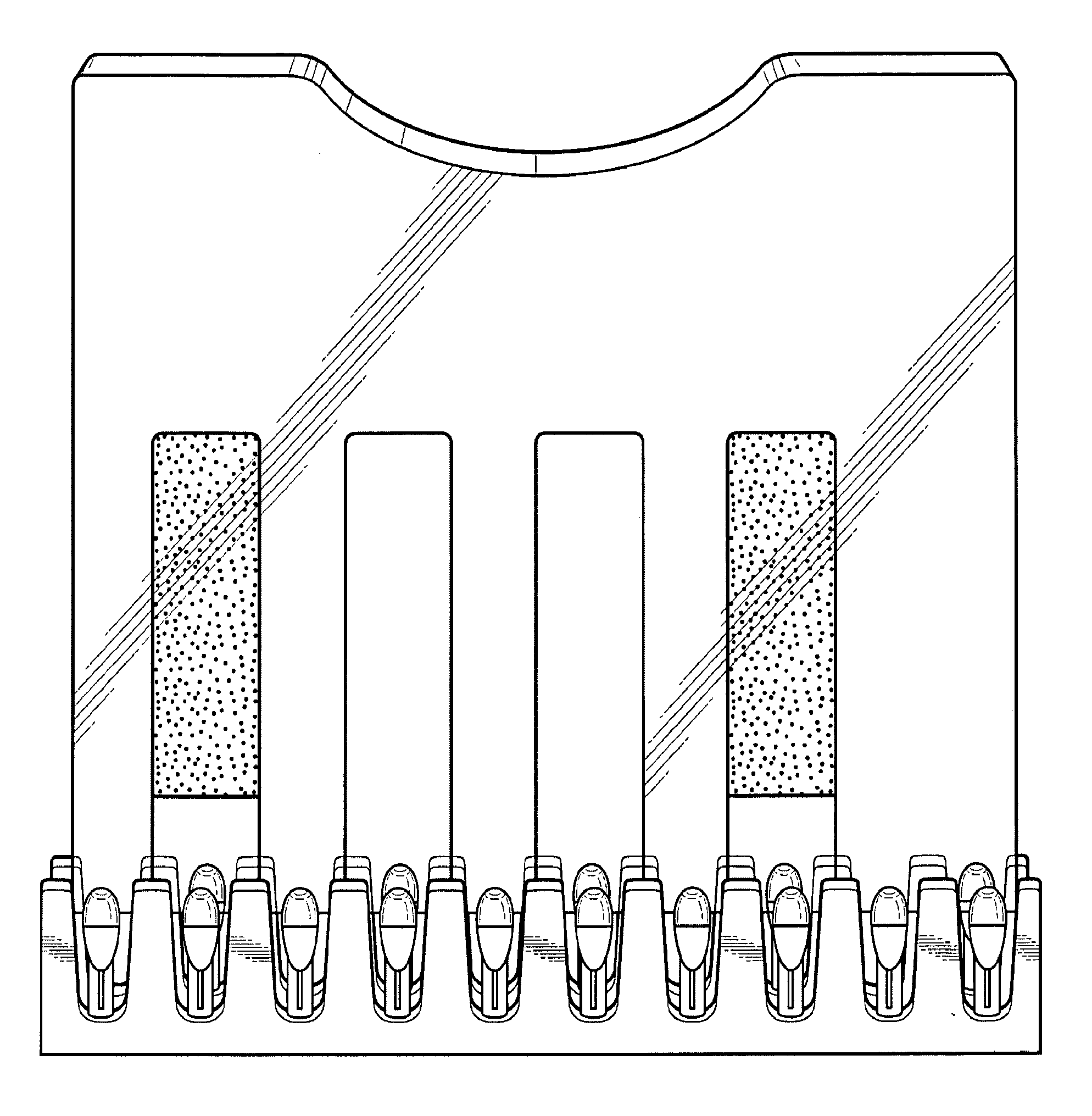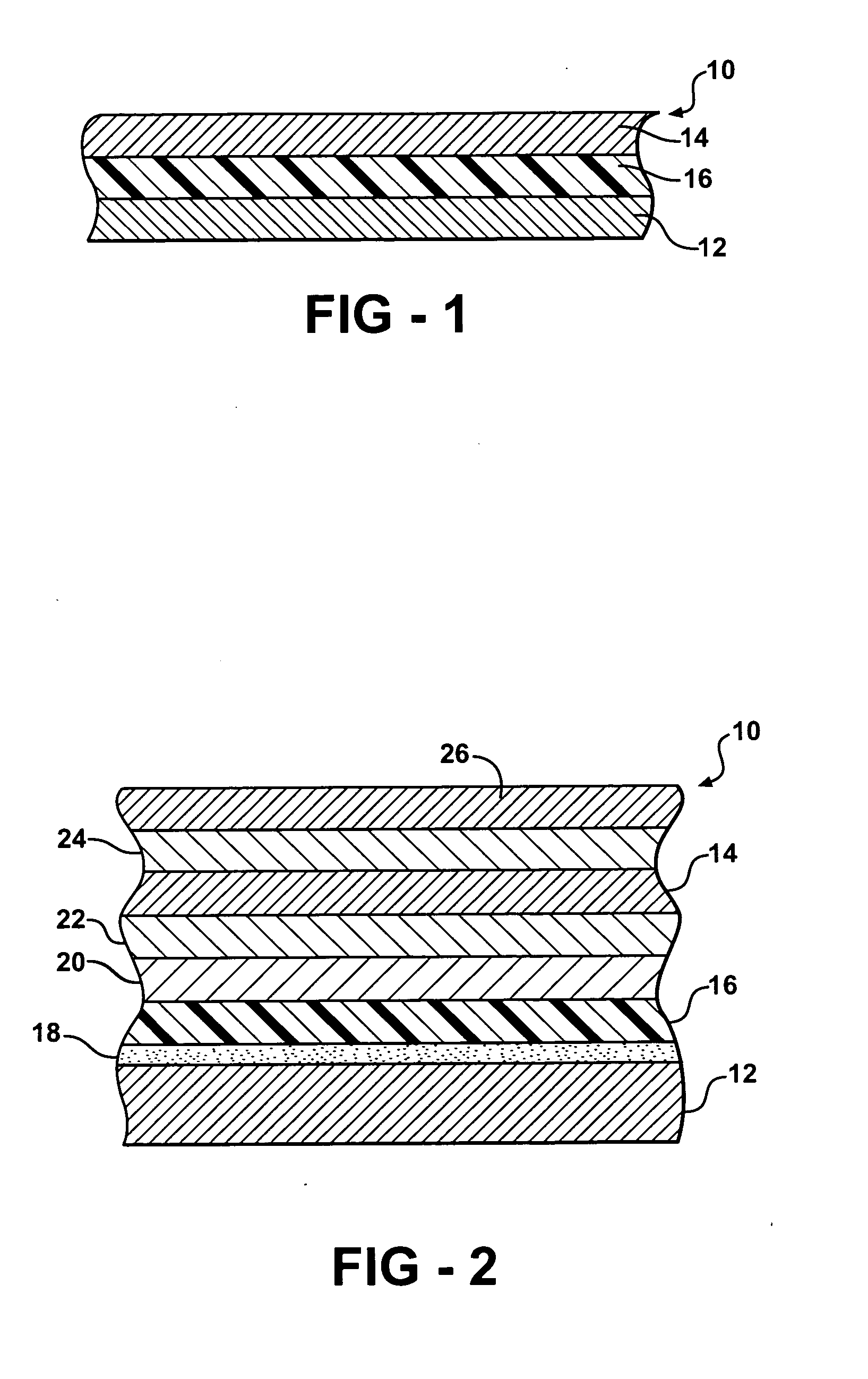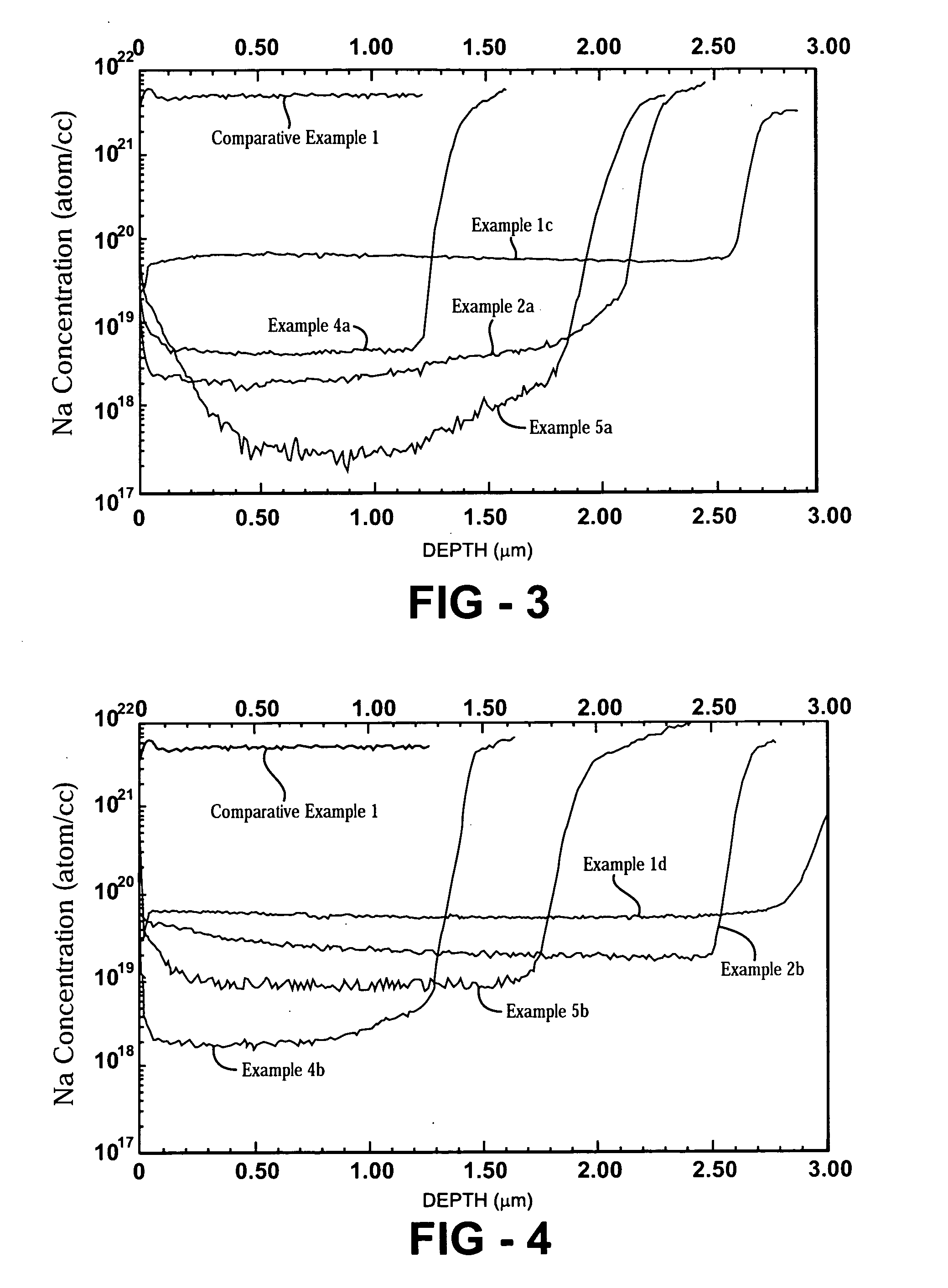Composite Article Including a Cation-Sensitive Layer
a technology of cation-sensitive layers and composite articles, applied in the field of composite articles, can solve the problems of reducing the lifetime of organic light-emitting layers, reducing the quality of high-quality glass, and reducing the thickness of the substrate including glass or other relatively brittle materials, so as to reduce the time and cost of making, improve the strength of the substrate, and reduce the thickness of the substrate. the effect of reducing the thickness
- Summary
- Abstract
- Description
- Claims
- Application Information
AI Technical Summary
Benefits of technology
Problems solved by technology
Method used
Image
Examples
example 1
[0159]A soda-lime glass substrate having a diameter of about 3 inches and a thickness of about 0.028 inches, with a transparent finish, 60 / 40-80 / 50 scratch / dig, and profile of flat to 2-3 waves / inch, was obtained from Valley Design Corporation of Shirley, Mass. The soda-lime glass substrate was cleaned by applying isopropanol and hand wiping the substrate, then acetone was spun on the substrate for 30 seconds at 1000 rpm. A silicone composition was pipetted onto the substrate, and then spun at 1000 rpm for 30 seconds. The silicone composition of this example was prepared using Resin A, which includes a siloxane of the following structure:
(MeSiO3 / 2)n
wherein n is from 10 to 50, more specifically about 30. Resin A was obtained from SDC Corporation of Garden Grove, Calif. Resin A further includes colloidal silica present in an amount of about 20 percent by weight based on the total weight of the silicone composition. Resin A is the siloxane composition for purposes of this example.
[016...
example 2
[0165]A substrate was obtained and prepared as set forth in Example 1. The substrate was coated with a silicone composition in the same manner as in Example 1, except a different silicone composition was used. To prepare the silicone composition, Resin B was used, which includes a siloxane of the formula:
(MeSiO3 / 2)0.45(PhSiO3 / 2)0.4(Ph2SiO)0.1(PhMeSiO)0.05
3.98 g of Resin B were mixed with 12.02 g toluene to produce a 24.9% siloxane solution. 3.2634 g of the siloxane solution was mixed with 0.0187 g of Y-177 catalyst commercially available from Dow Corning Corporation of Midland, Mich. to form the silicone composition. The silicone composition was filtered through a 0.2 μm, then a 0.1 μm Whatman filter. The filtered silicone composition was applied to the glass substrate and spun as described above. For Example 2a, the silicone composition was cured on the substrate in the forced air oven at 100° C. for 1 hour, then at 160° C. for 1 hour, and then at 200° C. for 1 hour. For Example 2...
example 3
[0166]A substrate was obtained and prepared as set forth in Example 1. The substrate was coated with a silicone composition in the same manner as in Example 1, except a different silicone composition was used. To prepare the silicone composition, Resin C was used, which includes a siloxane of the formula:
(MeSiO3 / 2)n
wherein n is from 10 to 50, more specifically about 30. A 29.5 wt % solution of Resin C in MIBK was prepared and centrifuged for 15 min, then filtered through a 0.2 μm filter to form the silicone composition. The filtered silicone composition was applied to the substrate and spun as described above. For Example 3a, the silicone composition on the substrate was cured in the forced air oven at 100° C. for 1 hour, then at 160° C. for 1 hour, and then at 200° C. for 1 hour. For Example 3b, the coated glass substrate was additionally heat aged at 300° C. for 1 hour in nitrogen.
PUM
| Property | Measurement | Unit |
|---|---|---|
| thickness | aaaaa | aaaaa |
| thickness | aaaaa | aaaaa |
| temperature | aaaaa | aaaaa |
Abstract
Description
Claims
Application Information
 Login to View More
Login to View More - R&D
- Intellectual Property
- Life Sciences
- Materials
- Tech Scout
- Unparalleled Data Quality
- Higher Quality Content
- 60% Fewer Hallucinations
Browse by: Latest US Patents, China's latest patents, Technical Efficacy Thesaurus, Application Domain, Technology Topic, Popular Technical Reports.
© 2025 PatSnap. All rights reserved.Legal|Privacy policy|Modern Slavery Act Transparency Statement|Sitemap|About US| Contact US: help@patsnap.com



